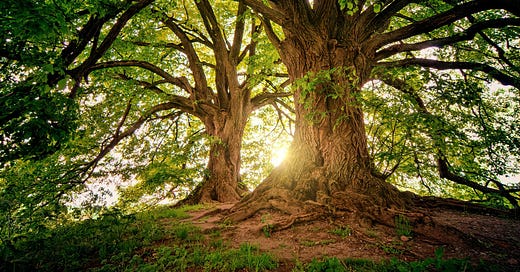Trees and forests have captured our imaginations for millennia. From the sacred groves of the Celts to Tolkien’s elves, Phoenician cedar to the Black Forest of the Brothers Grimm, trees play an enormous role in real-life cosmology. They also have tons of untapped potential when it comes to being useful for fictional characters and societies.
In Cosmology
…
Keep reading with a 7-day free trial
Subscribe to Manuscriptions to keep reading this post and get 7 days of free access to the full post archives.


